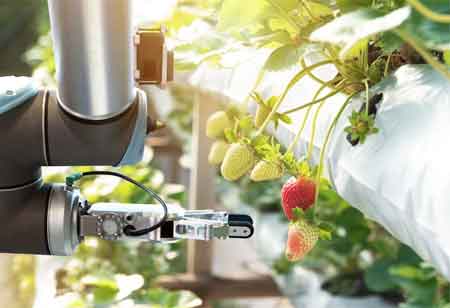THANK YOU FOR SUBSCRIBING
Be first to read the latest tech news, Industry Leader's Insights, and CIO interviews of medium and large enterprises exclusively from Food and Beverage Tech Review
How Technology Tools Can Help Enhance Food Safety
Food safety is an increasingly prevalent concern for consumers. As a result, many individuals are conscious of the food they’re consuming. Yet, regardless of the care consumers put into purchasing quality foods, foodborne illnesses continue to

By
Food and Beverages Tech Review | Wednesday, September 29, 2021
Stay ahead of the industry with exclusive feature stories on the top companies, expert insights and the latest news delivered straight to your inbox. Subscribe today.
Food safety is an increasingly prevalent concern for consumers. As a result, many individuals are conscious of the food they’re consuming. Yet, regardless of the care consumers put into purchasing quality foods, foodborne illnesses continue to make national news worldwide.
FREMONT, CA: Mistakes in food safety are every business's worst nightmare. Employees are constantly busy, and a forgotten handwashing, improperly stored meat, or a missed line check can all contribute to the outbreak of a foodborne illness, which can be detrimental to their brand. Given the importance of food safety education, below are some of the food safety technologies that assists food service employees in maintaining safe food storage, preparation, and service.
Mechanical monitoring
Sensors installed in coolers, freezers, and other areas used for food storage are rapidly becoming necessary for many businesses, and utilising food safety technology such as sensors that alert companies when the temperature exceeds safe holding temperatures can quickly address the issue without having to discard a freezer's worth of food. In addition, this type of continuous monitoring enables the secure storage of food in ways that manual inspections cannot.
Monitoring Apps
Food safety technologies, such as food safety software or cloud-based apps, can assist companies in various ways, including maintaining automatic HACCP logs, preventing employee fraud, and recommending corrective actions.
Identifying
Labelling prepared foods consistently is critical for preventing foodborne illness. Restaurants that utilize a commissary or offer freshly prepared items can benefit from automated labelling to comply with government regulations. In addition, automated food labelling, particularly when combined with a comprehensive restaurant management solution, relieves kitchen staff of a significant amount of work.
Decontamination using Ultra-Violet light
Food safety technologies that rely on light for food safety are maturing for commercial applications. For example, UV processes are used in restaurants and the supply chain. They can be an economical method of disinfecting food surfaces or clear liquids.
E-learning
With the rise of e-learning techniques such as microlearning, companies can provide employees with bite-sized reminders about their actions to keep people safe. Because microlearning is quick and straightforward to deliver, employees can receive food safety refreshers in under a minute.
These technologies assist in preventing foodborne illnesses outbreaks by identifying outbreak sources before people become ill and mitigate the effects on those exposed to pathogens.
I agree We use cookies on this website to enhance your user experience. By clicking any link on this page you are giving your consent for us to set cookies. More info







